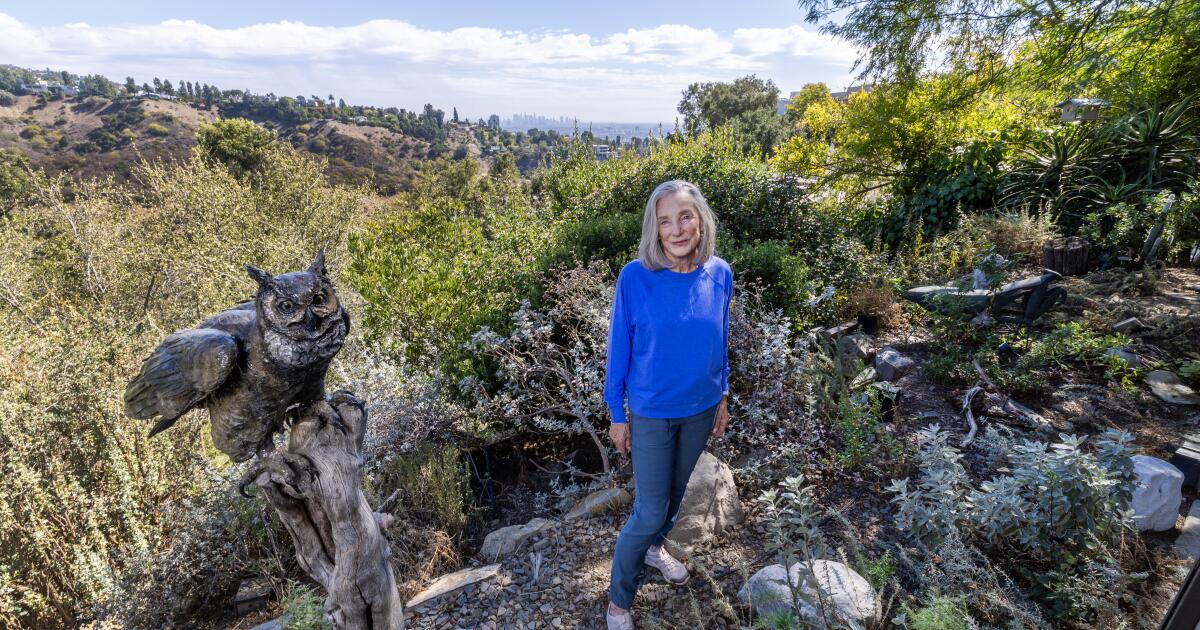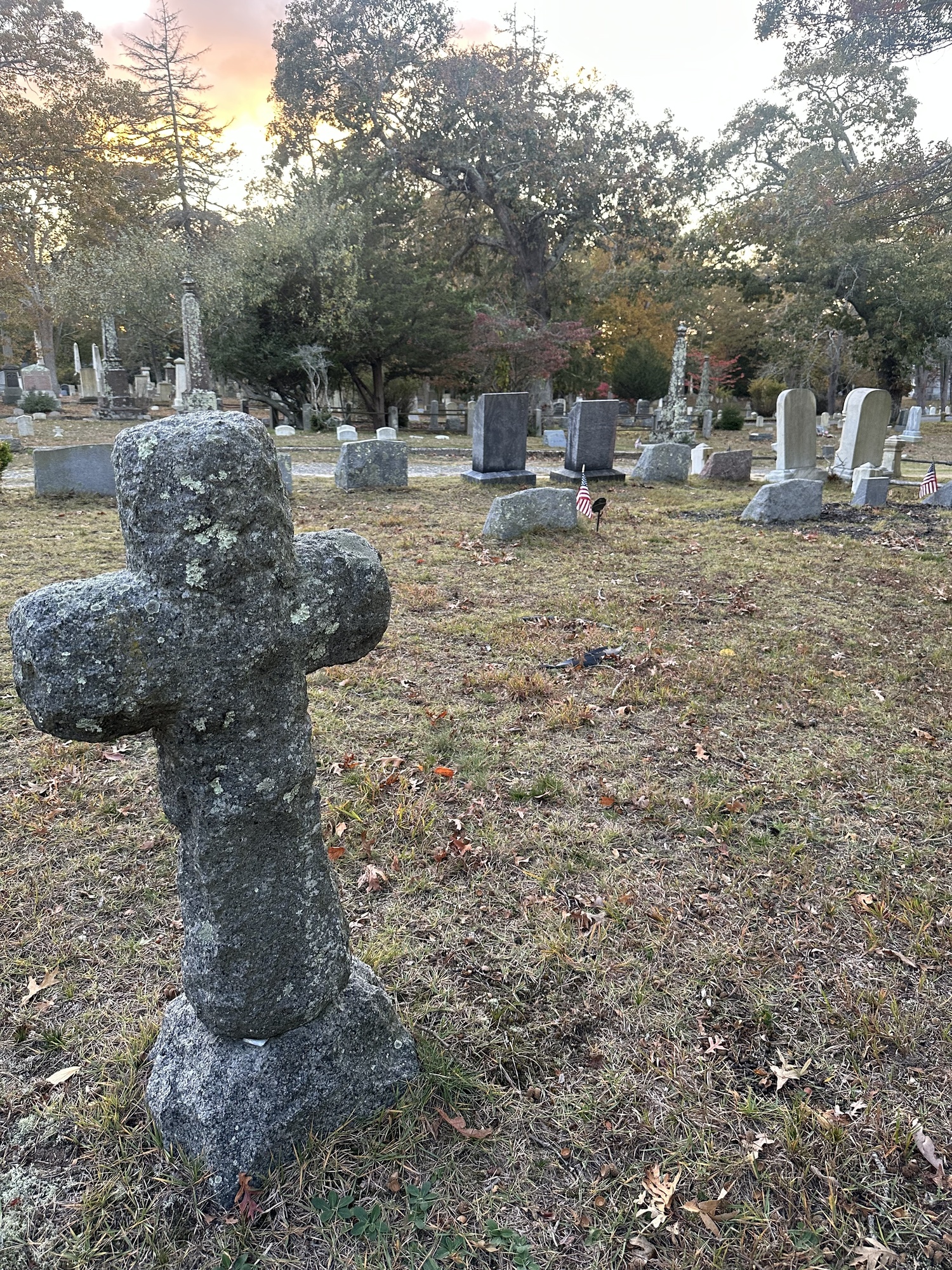Copyright Los Angeles Times

Welcome, incredibly, to November, the start of holiday feasting, eggnog abominations and prime planting season in Southern California, especially for sweet peas, greens and native wildflowers. This is the best time to plant most California native shrubs, flowers and trees, giving them time during our cool, and, one hopes, wet winters to send deep roots into the ground in preparation for our summer heat. Seedings of lettuce, beets, arugula, kale and other greens will fuel your soups and salads well into spring. And planting even a small patch of sweet pea seeds will reap abundant bouquets of ethereal flowers next spring, with an undefinable, unforgettable fragrance that fills a room. You can even grow them in pots! Below is a big list of plant-related activities, but first I want to focus on a limited opportunity for anyone interested in extraordinary native plant landscapes: an intimate tour of the famous Gottleib Native Garden in Beverly Hills led by the garden’s creator, Susan Gottleib, with all proceeds going to the Theodore Payne Foundation. This native garden is not your standard front-yard transformation. When Gottleib, and her late husband, attorney-turned-real estate developer Dan Gottleib, moved to their hilltop home above Coldwater Canyon in 1985, their hilly acre of yard was covered with ivy and a few other nonnative plants that were staples in landscaping from the 1960s, when the house was built. Gottleib had been a nurse for more than 20 years when she met her future husband in 1985. She gave up nursing to focus on other interests, such as birding and conservation. She and her husband used to drive the back roads of California and notice the dwindling water levels in many of the state’s lakes. “I worried about birds not being able to find enough water and food,” she said, “so I thought, ‘We have to do our small part to save water.’ We didn’t have a lawn, but we did have lots of ivy, so we stopped watering the ivy.” That was in 1989, and very shortly, all that dying ivy “looked like hell,” she said. She began researching plants that didn’t need lots of water, and by 1991, she stumbled on something she’d never heard of before: landscaping with native plants. “I didn’t realize the importance of it right away, but once I did, that’s what really sent me into this whole native plant thing, because everything relies on these plants, like insects,” Gottleib said. “[Entomologist and conservationist] Douglas Tallamy calls caterpillars ‘the little sausages that feed the world,’ ” she said. “There are just jillions of moth species that use these plants, and those caterpillars are what feed the birds. Then there are the birds and critters that eat the seeds these plants drop. They evolved to eat those seeds, and that’s another reason why those plants are so important.” She started small — a toyon outside her front door; a Yankee Point ceanothus, Ray Hartman ceanothus and sentinel manzanita outside her kitchen window — and tried to explain to her husband what she was doing. “He asked why we needed to get rid of the ivy, and I said, ‘For one thing, it doesn’t do anything except give rats a place to live,’ and he said, ‘Well, that’s why we live in here, and they live out there — perfect harmony,’ ” Gottleib said, laughing. “I didn’t know what to say to that, but I started the [native] garden anyway. And he supported what I was doing, even though he didn’t quite get it in the beginning.” Finding nurseries that sold native plants was a challenge in the early 1990s, but she discovered the Theodore Payne Foundation, thanks to a reference in the back of a Sunset plant book, she said, “and that became a lifelong love affair.” Over the years, Gottleib oversaw the property’s transformation to a densely planted hillside habitat complete with stairs, terraced walkways, fountains, ponds and even built-in benches. She said she’s learned a lot over the years, especially about finding native plants that are right for her region. “I figured out I was planting plants from Northern California that didn’t do so well here,” she said. “That was my lack of knowledge. I thought anything that grew in the borders of California was fair game. But then I realized that was ridiculous, and I started to limit myself pretty much to plants from around Los Angeles. That’s pretty much when I put all the encelia [a.k.a. bush sunflower or California brittlebush] in because if you look at our hillsides in the spring, the encelia are just a mass of yellow — if you can look past the mustard.” (On a side note, black mustard, as most SoCal folk know, is a nonnative invasive that also produces a riot of yellow springtime blooms, while crowding out native wildflowers and shrubs and maturing to a tall, brittle fire hazard.) Today, the Gottleib acre has more than 200 different native plants with insects, birds and other beasts — some 2,000 species in all, including 112 kinds of birds and more than 500 kinds of moths and butterflies. Motion sensor cameras have captured foxes, bobcats and 25 other non-human mammals coming to drink in Gottleib’s ponds. And the site hosts multiple research projects, covering everything from parasitic wasps to hummingbird health and the songs of migratory birds. The garden has long been a popular stop on Theodore Payne Foundation’s spring native plant garden tours, but it’s usually so packed with visitors it’s hard to actually see the garden and its spectacular views. For people who wanted more intimate glimpses, the Gottleibs also published a series of photo-heavy books about the plants and animals found in the garden. Dan Gottleib died on Jan. 29, 2024, and a year later, Susan Gottleib moved to a condo in Century City because she didn’t feel safe anymore living in her home alone. Their once-quiet street is noisy with construction projects and traffic, and she said the house would have required lots of upgrades to install the equipment she needed to feel secure. “I’m 84 now, and I just realized there was going to be construction on this street for the rest of my life,” she said. But the decision to leave her longtime home and garden was hard, she said, until her assistant, Diane Shader Smith, suggested she sell the home on the condition that she could lease it back for at least a year. And that’s how this golden opportunity came about. Once a month Gottleib, a lithe and nimble walker who barely looks 60, leads energetic tours of her garden for about 15 people who want a closer look at what a native landscape can be. All proceeds go to support the Theodore Payne Foundation. The tours cost $65, and the next one is set for Nov. 8 from 2 to 4 p.m., but they fill quickly. So if this month is sold out, don’t give up. Gottleib expects to be leading tours every month into June. If you’re really curious about native landscapes, I recommend visiting now, when many of the shrubs are coming out of dormancy, and again in the spring when the plants are in riotous bloom, to get a better understanding of how dynamic and inspiring a native landscape can be. And speaking of the holidays ... The Times’ 2025 Holiday Gift Guide arrives Sunday, online and in print, but you can still get inspo from my 2024 gift ideas for gardeners and plant lovers. Then, starting at 3 a.m. Sunday, check in for a whole new list of gift ideas for plant lovers, plus a whole range of other suggestions. And this just in! The Los Angeles Department of Water and Power has just doubled its turf removal rebates, from $5 to up to $10 per square foot for commercial, multifamily, industrial, institutional and public agency customers. The rebate offers $9 to $10 per square foot of turf replaced with a sustainable landscape that includes low-water-use plants. The higher rebates are spurred by the Metropolitan Water District’s decision to increase its rebates to nonresidential customers to $7 per square foot, and a new state mandate that will prohibit the use of potable water to irrigate nonfunctional turf on public agency properties starting in January 2027, and commercial, industrial and institutional properties in January 2028. Upcoming events Through Nov. 30 Spider Pavilion at the Los Angeles County Museum of Natural History includes an open air pavilion with hundreds of orb weavers and their elaborate webs and a “spider den” of enclosed habitats housing other arachnids, from tarantulas to jumping spiders. Reservations are required. Tickets are $10 plus $18 general admission ($14 seniors 62 and older, ages 13-17 or students with ID, $7 ages 3-12. Members and ages 2 and younger enter free). nhm.org Through Jan. 4 Searching for Serenity, an art exhibition at Descano Gardens’ Sturt Haaga Gallery, looks at how L.A. County’s 2025 wildfire disasters affected local artists. The exhibit, which “explores how art and nature can turn grief into resilience and devastation into hope,” according to a press release, is open from 10 a.m. to 4 p.m. daily. The opening reception is Saturday from 3 to 5 p.m. The exhibit and reception are free with $18 admission to the garden ($14 for seniors 65 and older and students with ID, $8 for ages 3-12). Members and children 2 and under enter for free. descansogardens.org Saturday and Sunday San Gabriel Valley Chrysanthemum Society Show & Sale, 9 a.m. to 4 p.m. in Ayres Hall at the Los Angeles County Arboretum in Arcadia. The show is free with $18 admission to the arboretum ($14 seniors 62 and older and students with school ID and $8 ages 3-12). Members and ages 2 and younger enter free. arboretum.org Saturday and Nov. 15 City Plants Shade Tree Adoption events, first-come, first-served; on Saturday at the Wilmington Recreation Center from 8:30 a.m. to 12:30 p.m. and El The Mar Vista Farmers Market in Mar Vista from 9 a.m. to 2 p.m,; also, from 9 a.m. to 2 p.m. Nov. 15 at the Los Angeles Department of Water and Power’s North Hills Center in North Hills and Watts Center in Watts. Trees come in 5-gallon containers and are typically 3 to 6 feet tall. The trees must be planted in the ground on private property. There is a limit of seven trees per household, and recipients must provide proof of residence in the city of L.A. Volunteers are also needed for a tree-planting event in Wilmington on Nov. 1 from 8:30 a.m. to noon. cityplants.org Sunday South Coast Chapter of the California Native Plant Society Milkweed Planting Field Trip, 9 a.m. to noon at Peck Park Canyon trailhead in San Pedro, using milkweed grown by the Palos Verdes Peninsula Land Conservancy and supplied by the Aquarium of the Pacific. Participation is free, but you must register and sign a liability waiver. connect.cnps.org Creatures: Explore Your Wild Side, an afternoon learning about birds of prey, creepy-crawly bugs and nocturnal animals from 3 to 6 p.m. at Sherman Library & Gardens. The event includes animals and displays from the Orange County Bird of Prey Center, Santa Ana Zoo, Adventures in Living Science, Sea & Sage Audobon Society and Environmental Nature Center. Buy tickets online, $30 for people 18 and older ($20 for members), $15 ages 4-17 ($10 members). Children 3 and younger enter free. thesherman.org Nov. 4-8 Fall Plant Sale at the Theodore Payne Foundation, 8:30 a.m. to 4:30 p.m. at the foundation’s nursery in Sun Valley. Admission is free, but if you plan to park on the grounds, reservations are required due to limited parking. events.humanitix.com Nov. 7-9 Cal State Fullerton Arboretum Fall Native Plant Sale also includes a variety of herbs, vines, succulents and perennials cultivated in the arboretum’s nursery, noon to 4 p.m. Nov. 7; 9 a.m. to 3 p.m. Nov. 8; and 10 a.m. to 2 p.m. Nov. 9. A list of plants is available online. Admission is free. arboretum.fullerton.edu Nov. 8 ReGreen Altadena Community TreeFest, a distribution of free tree saplings, seedlings and native plant seeds to Altadena residents, 10 a.m. to 2 p.m. at Odyssey Charter School in Altadena. Participants can pre-register to get on a list for larger trees such as live oak and black walnut. The event also includes expert advice on planting and maintaining trees, tree health and care. The event is free. altadenawild.org San Gabriel Mountains Chapter of the California Native Plant Society Fall Plant Sale, 9 a.m. to 2 p.m. at the Monrovia Historical Museum. The sale includes about 2,000 plants native to the San Gabriel Valley. A list of plants is available online. Admission is free. chapters.cnps.org Microforest Day: Ethnobotany Talk & Screening of “Making a Mini-Forest,” the documentary film by Angelina Lee, at West L.A. City College in Culver City from 11 a.m. to 1 p.m. Admission is free, but reservations are required. eventbrite.org. Earl Burns Miller Japanese Garden Chrysanthemum Festival, 1 to 3 p.m. in the garden at Cal State Long Beach. The festival includes music, crafts, activities and chrysanthemums available for purchase. Admission is $10. visitlongbeach.com South Coast Chapter of the California Native Plant Society Willow Springs Park Tour & Californica Nursery Fall Native Plant Sale, starting at 10 a.m. in Long Beach. The tour will be led by Larry Rich, sustainability coordinator for the city of Long Beach, and end with the first fall native plant sale with Californica Nursery at the park, in conjunction with the chapter. Participation is free. chapters.cnps.org Hands-on Lasagna Mulching Workshop at the Crescent Farm, 10 a.m. to noon at the Los Angeles County Arboretum in Arcadia. The workshop is free with $18 admission to the arboretum ($14 seniors 62 and older and students with school ID and $8 ages 3-12). Members and ages 2 and younger enter free. Registration is required. arboretum.org Soil Bioremediation After Urban Wildfire, a class taught by chemist Daisy Rosas Vargas of SoilWise, 11 a.m. at Fig Earth Supply nursery in Mount Washington. Buy tickets online, $20. figearthsupply.com Santa Barbara Botanic Garden Fall Plant Season Kickoff, 9 a.m. to 3 p.m. at the state’s second-largest native plant botanic garden. The hours between 9 and 11 a.m. are reserved for member purchases only; admission to the garden is not required, but reservations are required for parking, which is free. sbbotanicgarden.org Nov. 15 From Burn to Bloom: Redesigning Resilience at the Edge, a fire-resilient landscape design forum for wildland-urban communities sponsored by Studio Petrichor, its nonprofit arm Poly/Ana and the La Cañada Flintridge Country Club from 8:30 a.m. to 2 p.m. at the country club. Speakers include native plant landscape designers Shawn Maestretti and Leigh Adams, landscape architect Stephanie Landregan of Altadena Green and soil scientist Lynn Fang of Soilwise. Admission is $28.52 ($12.51 for people impacted by recent fires). eventbrite.com Native Bees, a talk by Krystle Hickman, author of the newly released book “The ABCs of California’s Native Bees,” from 10 a.m. to noon at the Los Angeles County Arboretum in Arcadia. Tickets are $25 ($20 members) or $53 for admission and a copy of Hickman’s book ($48 members). Register online. arboretum.org California Native Plant Container Gardening, a class taught by Theodore Payne Foundation nursery technician Terrence Williams, 10 to 11:30 a.m. at Los Nogales Nursery in Montecito Heights, a partnership between the foundation and the Audubon Center at Debs Park. Register online, $55.32 events.humanitix.com Fall & Winter Gardening Class led by Conor Fitzpatrick, owner of Fig Earth Supply nursery in Mount Washington from 11 a.m to noon at the nursery. Register online, tickets are $5. figearthsupply.com Nov. 22 Making Dolma with California Native Grape Leaves, a Theodore Payne Foundation class taught by Plant the Vine founder and viti-culturalist Ned Teitelbaum, 2 to 4 p.m. at the foundation in Sun Valley. All materials will be provided, but participants are asked to bring their own containers to take their stuffed grape leaves. Register online, $79.22. events.humanitix.com What we’re reading Most of California’s public grade schools are paved-over “nature deserts” sorely lacking in trees or shade, according to a team of researchers who collected data at more than 7,262 urban public schoolyards between 2018 and 2022. Worse, instead of shade, most of our students must play on heat-radiating asphalt. Climate change continues to fuel excessive heat, but the shade situation hasn’t improved in the last three years. Club Gay Gardens is a Glendale-based gardening club catering especially to queer Angelenos, and once a month, they meet to tend a small native-plant parkway garden along Brand Boulevard. Despite problems with trash, indifferent plant-stomping pedestrians and harsh growing conditions, the group has persevered to help their garden prosper. “There’s something really potent about queer people rooting for the underdog,” said member Nina Raj, “so ... a little parkway garden that takes a lot of extra care is really sweet, because you’re kind of rooting for it to thrive despite all the odds.” “This I gotta see”: That was my first — and continued — reaction to the 8½ acres of floating botanical gardens that will be built into the One Beverly Hills project, a $10-billion luxury high-rise housing and hotel complex at Wilshire and Santa Monica boulevards. Apparently, the soil in the gardens can be no more than 4 feet deep (since the gardens are over an 1,800-car underground garage), “yet it must nourish trees that are trucked in from other locations and are between 50 and 100 years old so that the garden appears to have been around a long time.” Says landscape architect John Pearson of Rios: “We want it to feel like it’s a botanical garden that just happens to be 40 feet in the air.”



